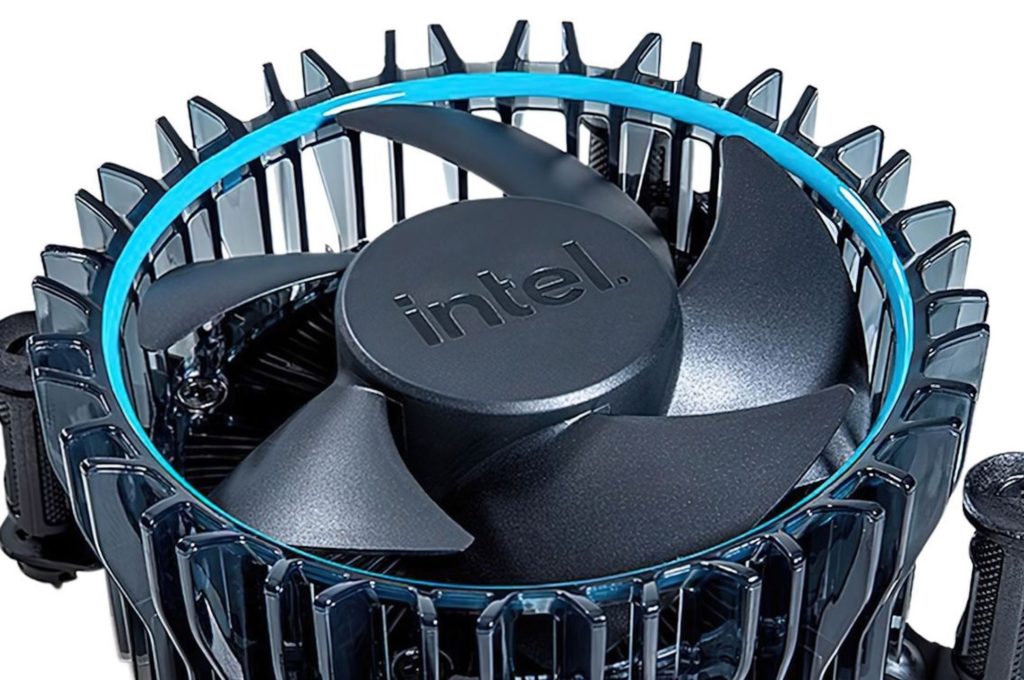Intel with more efficient Alder Lake processors will probably release more plastic coolers than expected
Intel’s box coolers have been stagnant for a long time. Since the first models on the LGA 775 platform (which is already quite historic), not much has changed with their coolers. However, a significant shift away from the usual shape will come at the beginning of the year with the more economical Alder Lake processors. We wrote about this in September, but the latest visualizations reveal some striking details.
The small coolers that Intel supplies with its processors have been pretty much the same for almost twenty years. Sure, you’d run into some minor intergenerational changes. Some had a higher profile, others had a taller profile, or the fan speed or shape of the fins differed. The heatsinks of some were characterized by curved fins, others by straight forks at the ends. And, for example, coolers for Comet Lake and Rocket Lake processors now have a black heatsink, but that’s just cosmetics.
However, Intel is no longer supplying all-aluminum monoliths with the current 65W TDP/PL1 processors, but with a copper core. That won’t work wonders in cooling, the effort to improve in this direction is there though. More significant changes in the design of coolers will come at the beginning of next year. This along with more efficient Alder Lake processors without an unlocked multiplier.
On the LGA 1700 platform with widened mounting hole spacing, there will apparently be three different models, according to a recent leak. The largest cooler was associated in the infographic with Core i9s with the highest power draw when boosting, and the smallest with Celerons and Pentiums, which in turn will be relatively undemanding and probably won’t reach 65W even at peak, in a way that even the Core i3-10105F, for example, doesn’t. And then there’s the third cooler you’ll encounter most often, as it’ll be added to Core i3s, Core i5s, and even Core i7s.
It was this one’s photo that appeared on the Twitter account of the well-known leaker momomo_us, who is also behind the first revelation. The difference, however, is that we now have a photo of significantly higher quality. In particular, it shows that the tall fins around the fan are just plastic – the material used shines through clearly. This is a bit disappointing, because in the original pictures they gave a “metallic” impression. And it’s possible that they were, as they are obviously not the same design. Also note the different shape of the fan blades, they are curved more prominently in the latest picture.
The absorption area is likely to be considerably smaller than we had hoped for. But hopefully it won’t be smaller than the existing coolers. Whatever the case may be, it’s nothing official yet and it’s possible that this is just another prototype and eventually the tall side fins will be returned to aluminum. Similar to how it is with many alternative coolers, where while pushing for the lowest possible height, there is also consideration for the largest possible fin area. This has been a weak point of Intel’s previous coolers, and one that designers could avoid in future ones.
Taller coolers for Core i9 might not be plastic like this, although they can be, and as with the Laminar RM1 (for Core i3 to Core i7) the side fins will only serve as a holder for the fancy blue ring. On the most powerful Laminar RH1 cooler it could be taller and in addition to the light duct (for RGB? LEDs) it could also function as a frame around the rotor to achieve higher pressure. However, it is necessary to consider that the new heatsinks might not be significantly more efficient than the old ones and the metal will be, as before, only the substrate, i.e. the material under the fan. Well, we’ll see… it is possible that we will be pleasantly surprised in the end.
English translation and edit by Jozef Dudáš
